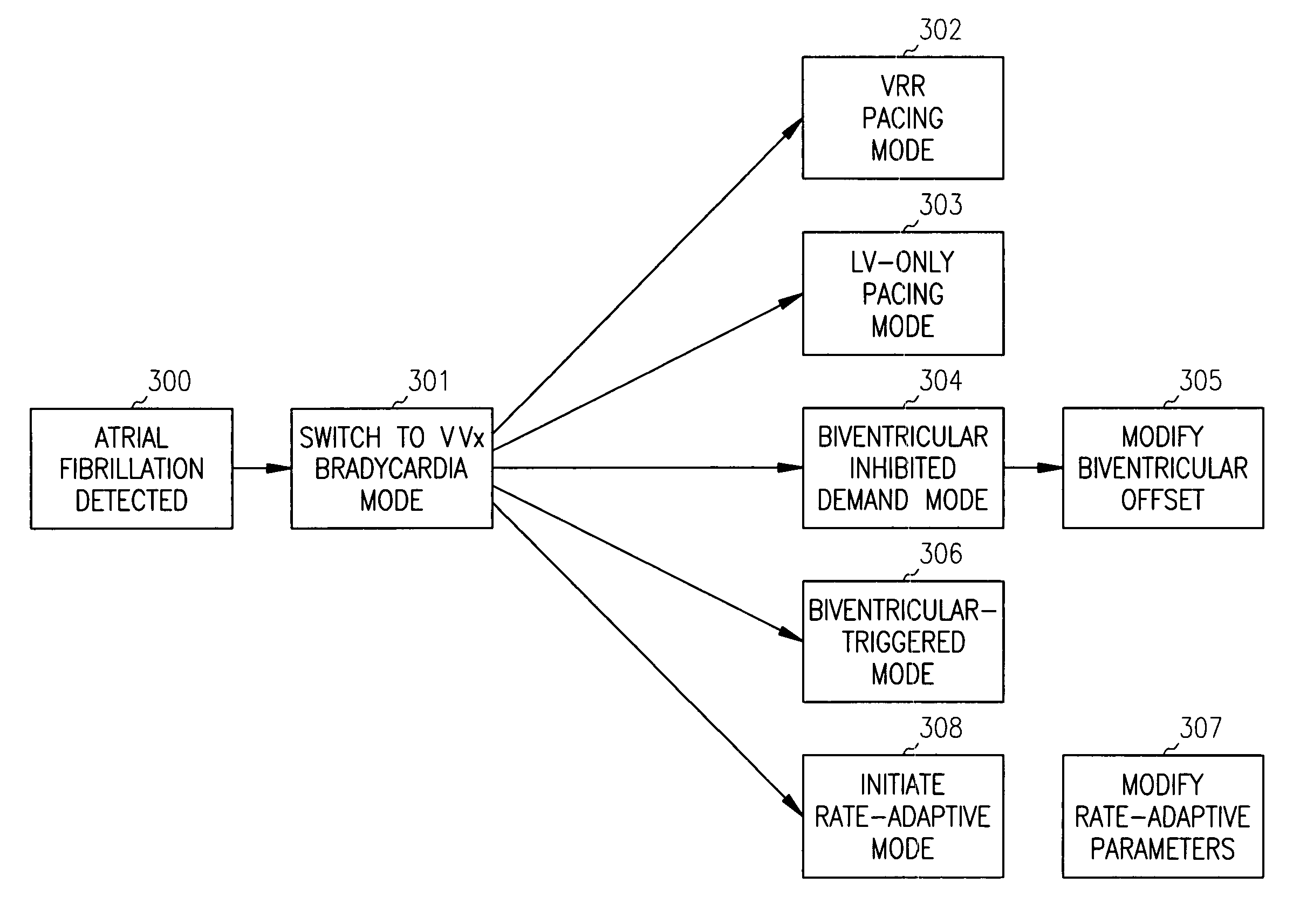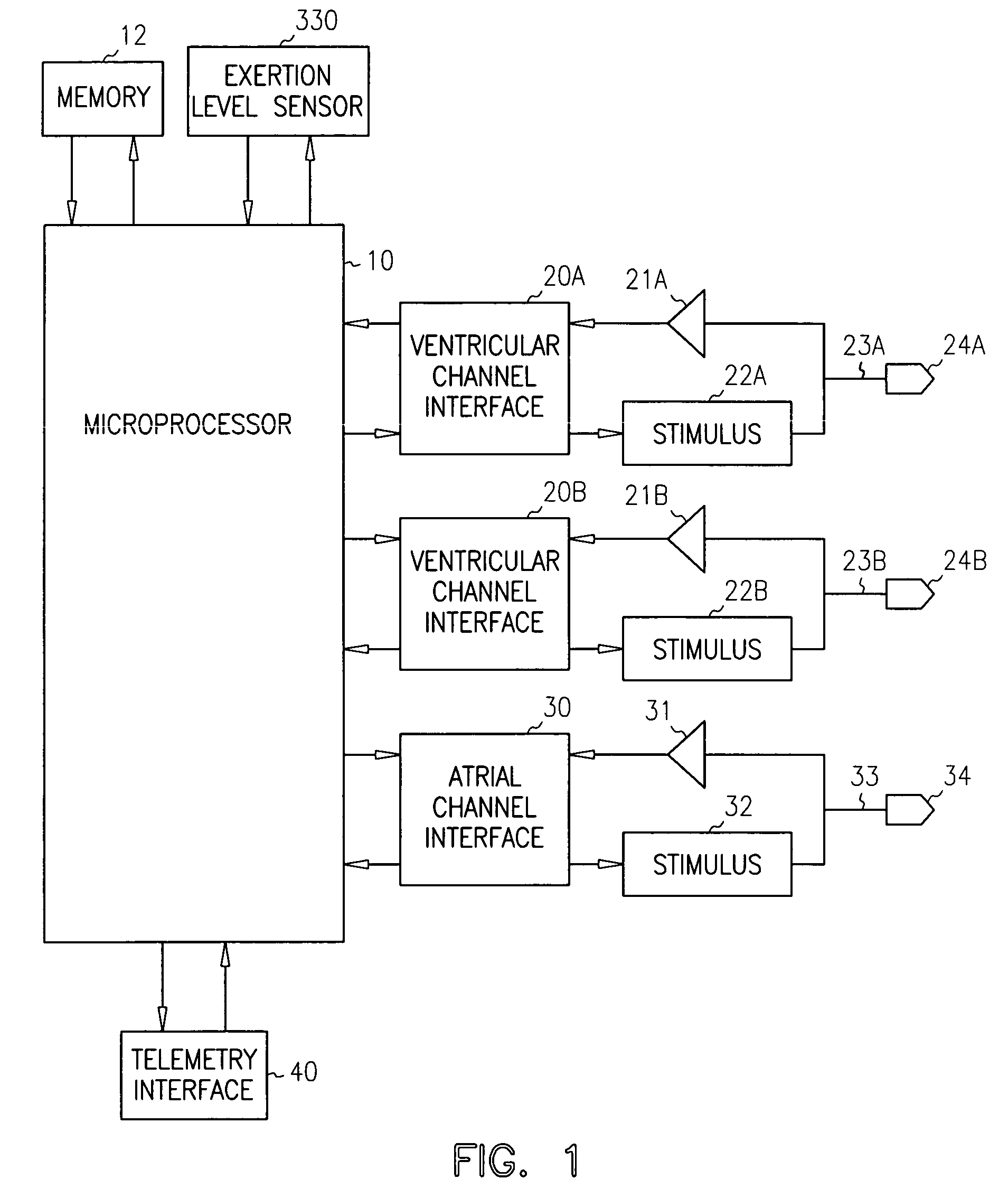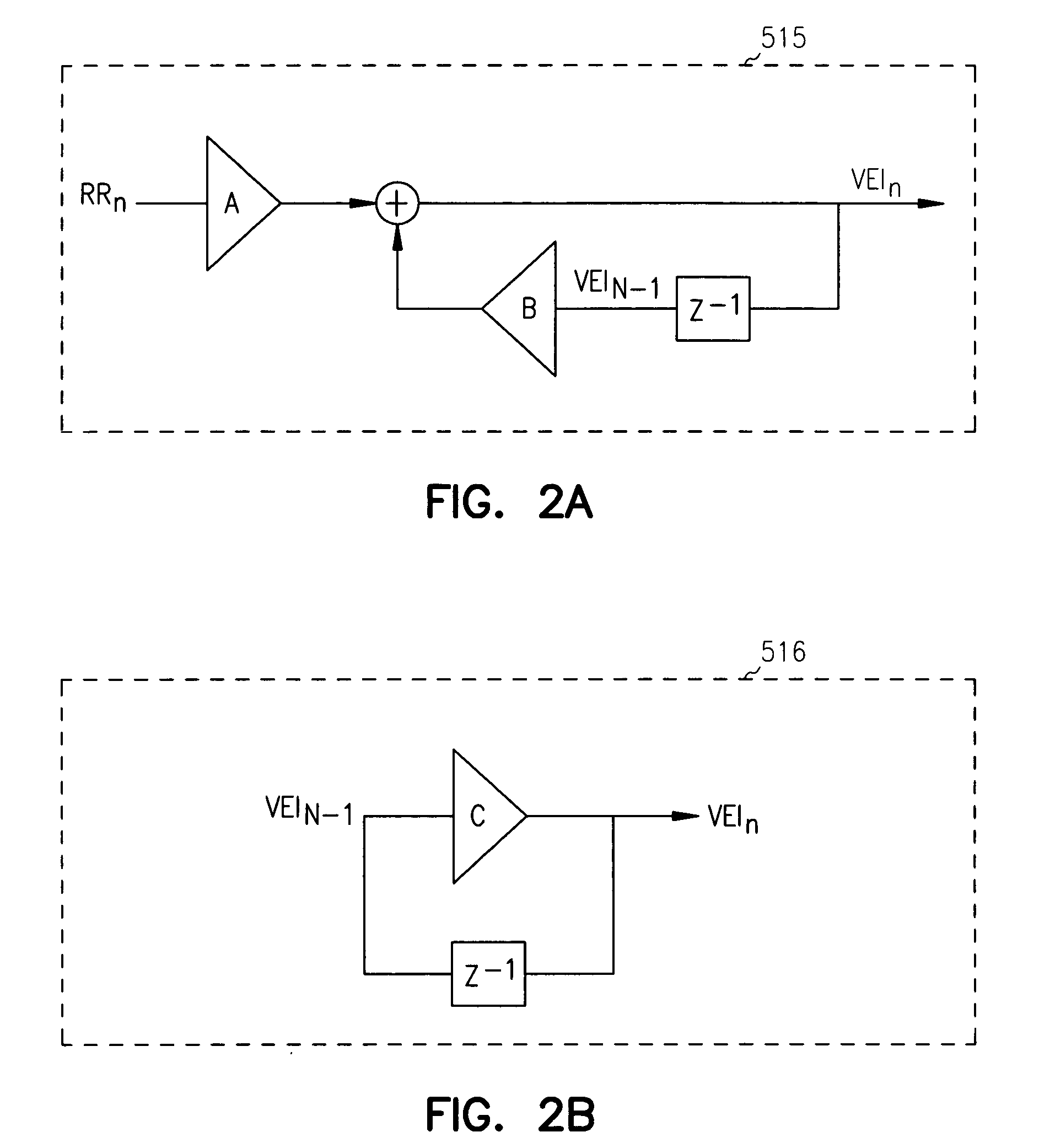Apparatus and method for pacing mode switching during atrial tachyarrhythmias
a technology of atrial tachyarrhythmia and pacing mode, which is applied in the field of cardiac pacemakers, can solve the problems of slowing down the conduction of depolarization impulses through the ventricle, and reducing the stroke volume of the atrial tachyarrhythmia, so as to improve the coordination of ventricular contractions, improve cardiac output, and increase the pace
- Summary
- Abstract
- Description
- Claims
- Application Information
AI Technical Summary
Benefits of technology
Problems solved by technology
Method used
Image
Examples
Embodiment Construction
[0013]The most common condition for which pacemakers are used is in the treatment of bradycardia, where the ventricular rate is too slow. Atrio-ventricular conduction defects (i.e., AV block) that are fixed or intermittent and sick sinus syndrome represent the most common causes of bradycardia for which permanent pacing may be indicated. If functioning properly, a pacemaker makes up for the heart's inability to pace itself at an appropriate rhythm in order to meet metabolic demand by enforcing a minimum heart rate. As described below, bradycardia pacing modes define which chambers are paced and the manner in which the paces are delivered. Pacing therapy can also be used in the treatment of congestive heart failure (CHF). Some CHF patients suffer from some degree of AV block or are chronotropically deficient such that their cardiac output can be improved with conventional bradycardia pacing. It has also been shown, however, that some CHF patients suffer from intraventricular and / or i...
PUM
 Login to View More
Login to View More Abstract
Description
Claims
Application Information
 Login to View More
Login to View More - R&D
- Intellectual Property
- Life Sciences
- Materials
- Tech Scout
- Unparalleled Data Quality
- Higher Quality Content
- 60% Fewer Hallucinations
Browse by: Latest US Patents, China's latest patents, Technical Efficacy Thesaurus, Application Domain, Technology Topic, Popular Technical Reports.
© 2025 PatSnap. All rights reserved.Legal|Privacy policy|Modern Slavery Act Transparency Statement|Sitemap|About US| Contact US: help@patsnap.com



